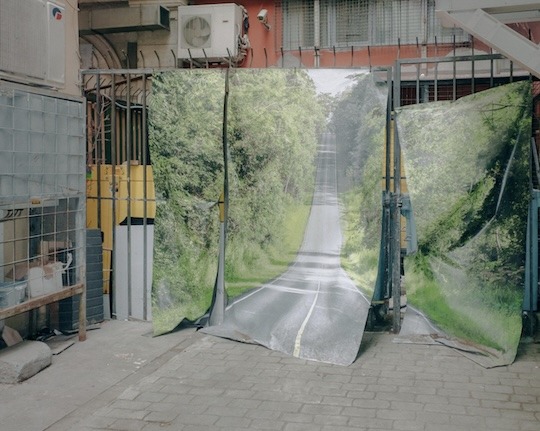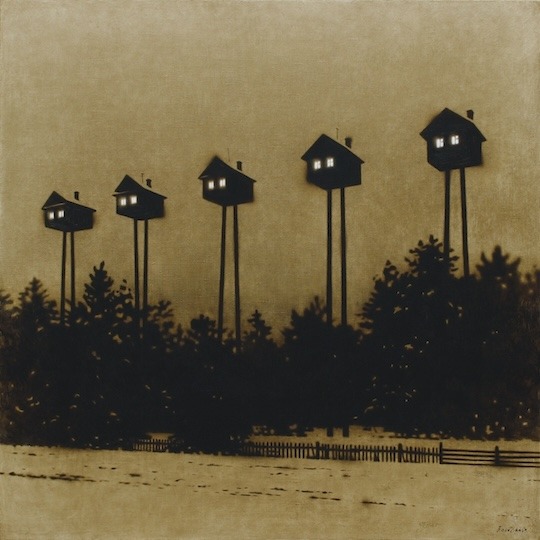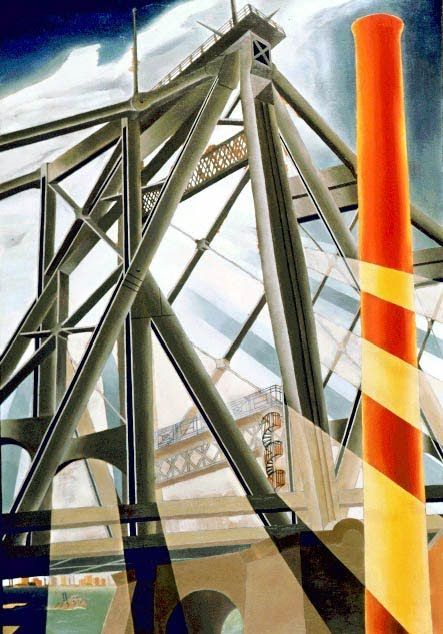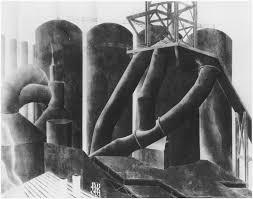#elsie driggs
Text

Pittsburgh (1927). Elsie Driggs.
29 notes
·
View notes
Text

Elsie Driggs, "Blast Furnaces", 1927. Oil on canvas, 33 x 39 in. (83.8 x 99.1 cm). Crystal Bridges Museum of American Art, Bentonville, Arkansas, 2017.1.
15 notes
·
View notes
Text
House & Gardens

Pablo Picasso - House in a Garden, 1908
::

Fairfield Porter - The Pump House
::

Hiroshi Yoshida- A Garden in Okayama, 1933
::

Ci Demi
::

Elsie Driggs - Italian Vineyard
::

unknown - Felix da housecat, Belgium
::

Charles Rennie Mackintosh - Duille
::

Susan Abbott - Lubec Morning
::

RHADS - Tree of loneliness
::

Rinat Voligamsi - A Cluster of Houses above the Woods
::

Beniamino Servino
::

Antoine Josse
::

unknown
::
3 notes
·
View notes
Text

Elsie Driggs (American, 1898-1992)
Egyptian Gothic
Watercolor
Freeman’s
9 notes
·
View notes
Text

Aeroplane - Elsie Driggs, 1928
3 notes
·
View notes
Photo

Elsie Driggs - Pittsburgh (1927)
1 note
·
View note
Photo




Precisionism developed in a decade following the end of the World War I, in 1920s America. Its short time span of slightly over ten years – until the early ‘30s – does not, however, undermine its significance in modern art world. Being considered the first autochthone art style developed in the US, it nonetheless holds stylistic connection with European Modernism and styles developed by historical avant-gardes. Similarily to Cubism and Futurism, their aesthetics are of a broken, segmented world where precision, dynamism, linearity, and angular forms take over the natural shapes of the everyday objects. Again, like Cubism, Precisionism defined the existing space through conspicuous rendering of angular forms that often simplify the depicted world, but also divest the world from emotions. Industrial aesthetics, with focal point on metropilitan and industrialized landscapes, followed Futurists’ obsession with the new age of technological progress and innovation
Paquebot 'Paris', Charles Demuth
Chimney and Water Tower, Charles Demuth
When the Grass Grows Green, Dale Nichols
Pittsburgh, Elsie Driggs
https://www.pinterest.com/johnbabich/precisionism/?lp=true
http://www.dwigmore.com/precisionism_essay.html
https://www.widewalls.ch/precisionism-art-history/
10 notes
·
View notes
Text
Blast Furnaces -- Elsie Driggs
Blast Furnaces — Elsie Driggs
Blast Furnaces, 1927 by Elsie Driggs (1898-1992)

View On WordPress
0 notes
Photo

Elsie Driggs was inspired to make this painting by a childhood memory of Pittsburgh’s steel mills. Returning twenty years later to capture the scene, she initially tried to paint it from inside the mill. The owners thought the factory floor was no place for a woman, though, and management worried that she might be a labor agitator or industrial spy. Today the painting may seem to warn of the dangers of industrial pollution, but Driggs did not have an oppositional agenda. She ended up basing the work on drawings she made from a hill above her boardinghouse, later writing that she stared at the mills and told herself: “‘This shouldn’t be beautiful. But it is.’ And it was all I had, so I drew it.” See the work now in Where We Are: Selections from the Whitney’s Collection, 1900–1960.
[Elsie Driggs (1895–1992), Pittsburgh, 1927. Oil on canvas, 34 1/4 × 40 1/4 in. (87 × 102.2 cm). Whitney Museum of American Art, New York; Gift of Gertrude Vanderbilt Whitney Accession number 31.177]
#Elsie Driggs#Pittsburgh#Steel#Steel Mill#Painting#American Art#Art#Factory#Industry#Whitney Collection#Where We Are#Whitney Museum#Whitney Museum of American Art
339 notes
·
View notes
Photo





Elsie Driggs (1898 – 1992) was an American painter known for her contributions to Precisionism, America's one indigenous modern-art movement before Abstract Expressionism.
She was the only female participant in the Precisionist movement, which in the 1920s and 1930s took a Cubist-inspired approach to painting the skyscrapers and factories that had come to define the new American landscape.
About the top painting on the left: Elsie Driggs was inspired to make this painting by a childhood memory of Pittsburgh’s steel mills. Returning twenty years later to capture the scene, she initially tried to paint it from inside the mill. The owners thought the factory floor was no place for a woman, though, and management worried that she might be a labor agitator or industrial spy. Today the painting may seem to warn of the dangers of industrial pollution, but Driggs did not have an oppositional agenda. She ended up basing the work on drawings she made from a hill above her boardinghouse, later writing that she stared at the mills and told herself: “‘This shouldn’t be beautiful. But it is.’ And it was all I had, so I drew it.” See the work now in Where We Are: Selections from the Whitney’s Collection, 1900–1960. [Elsie Driggs (1895–1992), Pittsburgh, 1927. Oil on canvas, 34 ¼ × 40 ¼ in. (87 × 102.2 cm). Whitney Museum of American Art, New York; Gift of Gertrude Vanderbilt Whitney Accession number 31.177]
25 notes
·
View notes
Photo










Bourke-White
100 fotografie da Life: una retrospettiva
Vicki Goldberg
Pubblicato a cura di United Technologies Corporation con la collaborazione di “Life” e “Fortune”, Londra 1988, 120 pagine, copertina rigida, 29.8×30 cm, fotografie in b/n e a colori
euro 70,00
email if you want to buy [email protected]
Mostra organizzata da International Center of Photography New York a Milano, Castello Sfozesco Sala Viscontea 3-31 maggio 1989
La fotografia di Margaret Bourke-White, i suoi soggetti ed il suo stile sono lo specchio del suo tempo. Agli inizi della sua carriera la fotografa americana era stata compiutamente moderna: apparteneva esplicitamente e coscientemente al suo tempo ed era convinta che la macchina ne fosse l’espressione. Ella prediligeva l’ambiguità spaziale, i piani sovvrapposti, le geometrie astratte e amava ridurre soggetti tridimensionali ad uno schema a due dimensioni. Questi elementi cubisti mettono i suoi lavori in relazione con quelli di un gruppo di artisti noti come precisionisti. Il romantico cubismo dei suoi esterni della Otis Steel è vicino a quello di Charles Demuth in Inces of a New Church; il cubismo geometrico delle sue fotografie di tubazioni nella fabbrica richiama lo stilizzato Queensborough Bridge di Elsie Drigg. Le sue fotografie industriali tendono a volte al teatrale e perfino al retorico. In definitiva il catalogo “Bourke-White” ripercorre la ricerca di una delle fotografe più influenti e più ammirate del XX secolo.
08/01/22
orders to: [email protected]
ordini a: [email protected]
twitter: @fashionbooksmi
instagram: fashionbooksmilano, designbooksmilano tumblr: fashionbooksmilano, designbooksmilano
#Margaret Bourke-White#photography exhibition catalogue#Castello Sforzesco Milano 1989#International Center Photography New york#retrospettiva#photography books#libri di fotografia#Lifemagazine#fashionbooksmilano
10 notes
·
View notes
Text

Elsie Driggs (American, 1898-1992)
The Sulky
Watercolor
Freeman’s
5 notes
·
View notes




